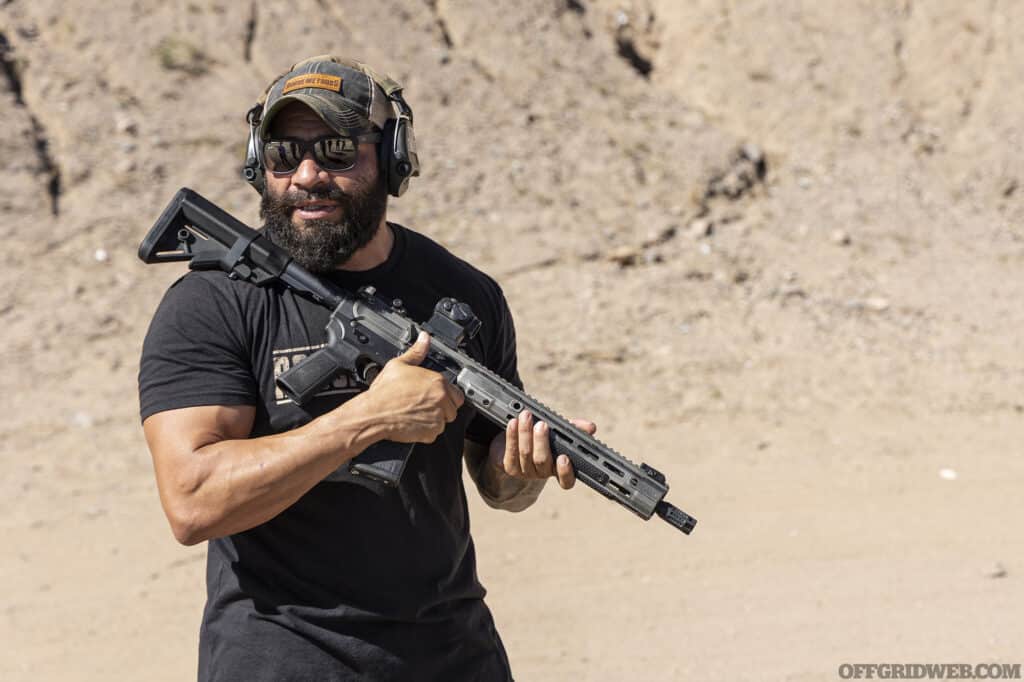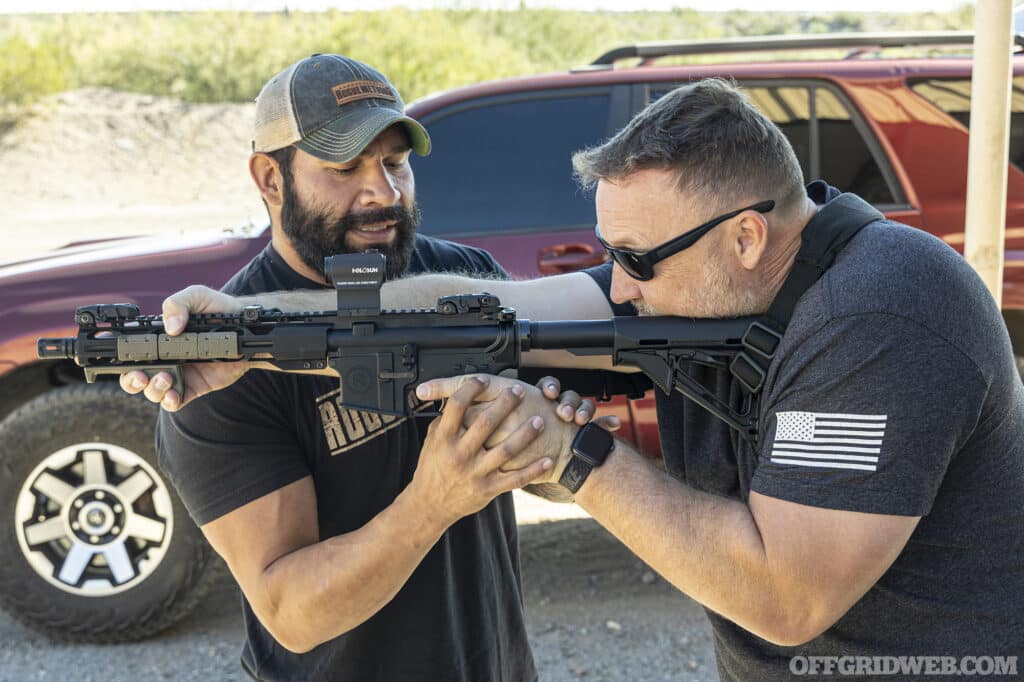RECOIL OFFGRID Preparation The Final Weapon: Low-Profile Carbine
President Biden famously said, “You don’t need an AR-15. It’s harder to aim. It’s harder to use. And, in fact, you don’t need 30 rounds to protect yourself. Buy a shotgun.” He continued, “If there’s ever a problem, just walk out on the balcony here … put that double-barreled shotgun, just walk out on the balcony and fire two blasts outside the house.” Politics aside, we shouldn’t need to tell you this is bad advice — in any defensive shooting situation, you’ll need to account for every round you fire, so blindly slinging buckshot off the porch is a terrible idea. Furthermore, I’d argue that a 30-round capacity, semi-automatic, low-recoil carbine is in fact an excellent choice for home defense. However, simply placing an low-profile carbine by your bedside isn’t enough to be fully prepared. If your carbine is your first-line defensive tool, you should also train with that carbine. More importantly, your training should be realistic to the scenario.
Rogue Methods is a training company founded by U.S. Army veteran and former Chicago PD undercover officer Raul Martinez Jr. — you can read more about him in my Spotlight interview inside this issue. Martinez aims to provide courses that teach realistic fighting skills, rather than the flat-range-focused, technical shooting skills found in many other courses. I recently attended Rogue Methods’ Low-Profile Carbine class, which takes a unique approach to teaching defensive carbine skills.

Above: Martinez's own carbine of choice is a Cobalt Kinetics 11.5-inch SBR equipped with an Aimpoint Micro red dot.
The class began with a segment on a topic Martinez addresses in every one of his courses: first aid. Each student practiced applying a C-A-T tourniquet to their own limbs and to other students’ limbs. For the latter, we wrapped excess strap around the windlass to prevent quick removal — tourniquets are painful, and victims may try to loosen them, leading to preventable fatalities.
Next, Martinez discussed carbine setup. He covered topics including red dot brightness, cheek weld (bring the sight to your eye, not vice versa), stock position, grip (don’t break it when you’re working the selector), and sling configuration (something you can “swim out” of quickly to reposition). Speaking of slings, we removed them from our carbines at this point, since Martinez wanted us to get used to the feeling of using them in a “grab and go” bedside gun configuration. We also didn’t wear battle belts or chest rigs full of mags, since that’s not gear you’re likely to be wearing in a spur-of-the-moment self-defense incident. We loaded one mag into the gun, dropped a spare into a pocket, and stepped onto the range.
Each student worked in three- to five-round strings, learning to reset the trigger quickly under recoil and adjust point of impact based on optical offset at close range. We practiced the three ready positions — low ready, high ready, and muzzle up (aka high port) — to get a feel for the situational pros and cons of each. For example, the latter might be necessary to keep the muzzle pointed away from bystanders or family members in tight spaces. A variety of drills were conducted between 10 and 30 yards, leading us to vary our shooting cadence based on distance and target size. Accuracy and shot accountability were repeatedly emphasized, because as I mentioned earlier, you’re legally and morally responsible for every round you fire. That said, Martinez didn’t expect perfection from students, and reminded us that an effective hit is still an effective hit even if it’s slightly off-center. The key is the ability to get those hits on demand, under stress, and quickly enough to remain unharmed by an attacker.

Above: Martinez gave one-on-one advice to each student regarding grip, stance, and carbine setup at the start of the class.
Additional layers of difficulty were added as we walked and ran between positions and worked around barricades. We learned how to move swiftly up to cover, staying back far enough to fully extend the gun. To lean out from behind cover, the leading foot is planted, and body weight is shifted over that foot like the beginning of a lunge, yielding improved stability. Multiple targets were added to the mix, as well as “no shoot” targets, since Martinez emphasized that having enough restraint to know when not to shoot is critical.
I really enjoyed this Low-Profile Carbine class, and it served as a good reminder about the intricacies of training for home defense. For more information on upcoming Rogue Methods classes, go to rogue-methods.com.
 STAY SAFE: Download a Free copy of the OFFGRID Outbreak Issue
STAY SAFE: Download a Free copy of the OFFGRID Outbreak Issue
No Comments